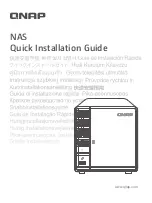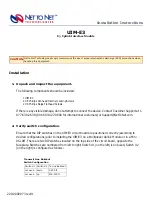
14
MDE-LEDI-NETWORK-TDS-4099V3.0
2.2. MANUAL NETWORK CONFIGURATION
In the case of an NTP input, local time outputs and/or specific configurations of time outputs,
LEDI
®
Network TDS
server configuration is required to synchronise equipment.
By default, the server is configured to obtain its IP addresses (v4 and v6) on a DHCP server.
There are several ways in which the IPv4 and IPv6 configurations can be manually modified:
►
By accessing the web interface, on the ‘Network’ page. (See section 5.2.3)
►
By using the buttons on the front (see section 4.5.2)
►
By using the Telnet and SSH consoles (see 5.2.10. section F)
Additionally, the server will automatically take an IP address within the 169.254.0.0/16 and
fe80::/10 predefined scopes. The IP addresses of the
LEDI
®
NETWORK TDS
can be viewed
on the LCD display on the front panel at any time by pressing one of the arrow keys.
2.3. TIME OUTPUT CONFIGURATION
The default configuration for the output cards is to deliver their time code in UTC format and
only when the server is synchronised.
For most cards, the output time code format as well as the time zone and DST (Daylight
Saving Time) policy can be modified.
Refer to section 5.2.9. ‘
Output’
page to change these settings.
2.4. ALARM CONFIGURATION
►
The
LEDI
®
NETWORK TDS
has an embedded alarm system that alerts administrators
in the event of a problem.
►
The LDC front screen displays the current alarm messages, and its backlight flashes to
indicate that at least one alarm is in progress.
►
SNMP traps can be sent to one or several supervision stations.
►
The server can send an email with details of the situation.
►
The server can send Syslog data to one or two servers.
These 3 features are configurable in the ‘SNMP’ and ‘Alarm’ webpages
(see sections 5.2.4 and 5.2.5)















































